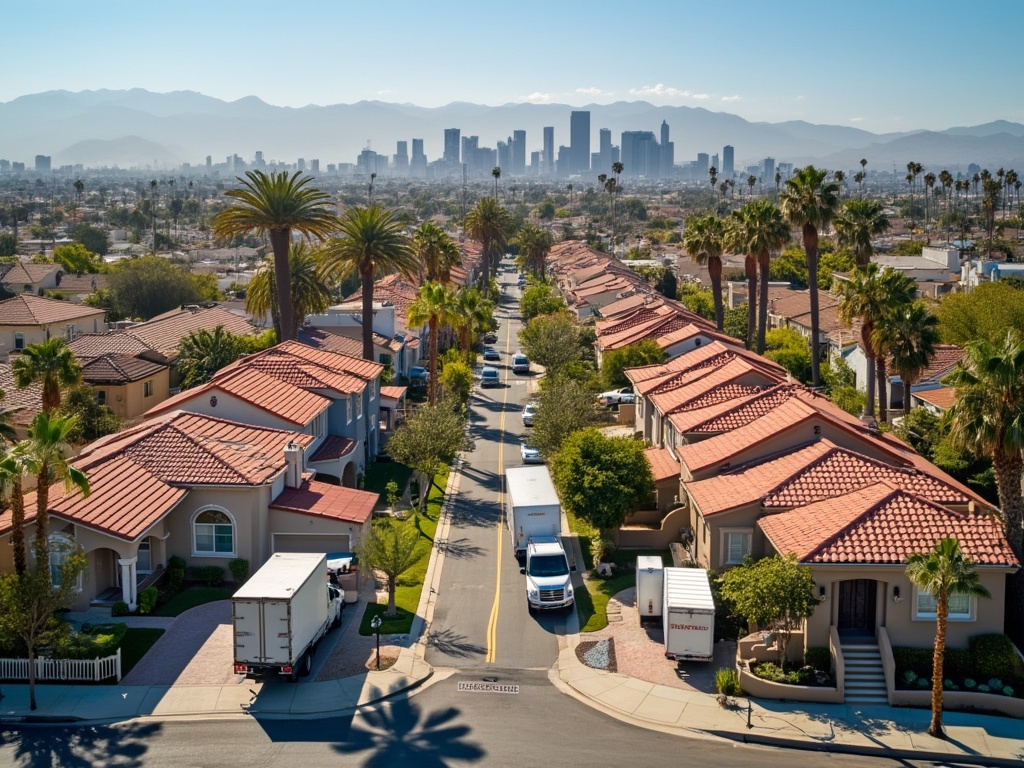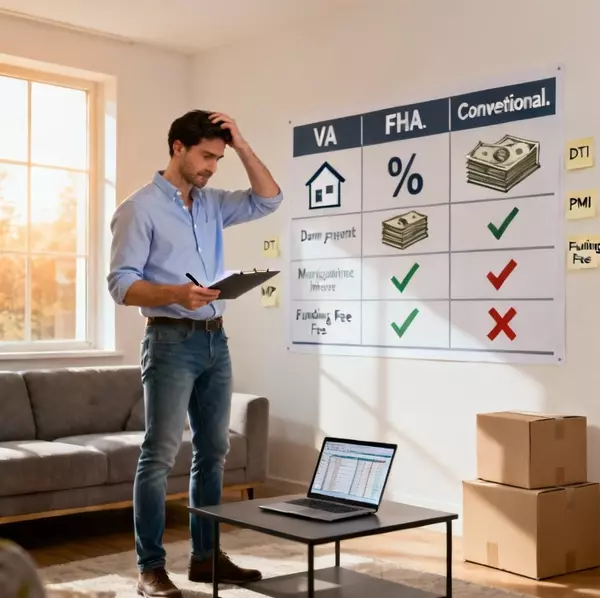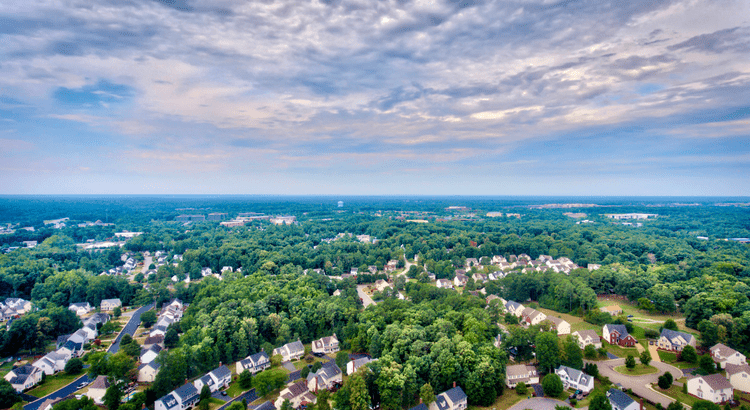Affordable Homes in Los Angeles
How Can I Find Affordable Homes in Los Angeles as a Newcomer? A Comprehensive Guide to Navigating LA's Housing Market
Moving to Los Angeles represents one of life's most exciting adventures, offering endless opportunities in entertainment, technology, business, and culture. However, the city's well-documented reputation for astronomical housing costs can feel overwhelming for newcomers who are already managing the stress of relocating to a new city. The good news is that with strategic planning, thorough research, and the right local expertise, finding an affordable home in the City of Angels is not only possible but can lead to discovering vibrant communities that offer exceptional quality of life without breaking the bank.
Los Angeles is a sprawling metropolis comprising over 80 distinct neighborhoods, each with its own character, amenities, and price points. While areas like Beverly Hills, Santa Monica, and West Hollywood command premium prices, numerous neighborhoods throughout the city offer affordable housing options that provide excellent value, strong community connections, and convenient access to employment centers, entertainment, and cultural attractions.
Understanding LA's Diverse Affordable Neighborhoods for Homebuyers

San Fernando Valley Communities
Panorama City stands out as one of the most budget-friendly options in Los Angeles for homebuyers, offering a suburban atmosphere with tree-lined streets, family-friendly parks, and a strong sense of community. The neighborhood features a diverse mix of single-family homes, condominiums, and townhomes, with many properties offering spacious layouts, private parking, and yards perfect for families. Home prices in Panorama City remain significantly below LA's median, making it an attractive option for first-time buyers. Residents enjoy easy access to the Panorama City Shopping Center, numerous restaurants serving authentic international cuisine, and recreational facilities including golf courses and community centers. The area's proximity to major freeways makes commuting to other parts of LA manageable, while local bus routes provide public transportation options.
Van Nuys represents the heart of the San Fernando Valley, perfectly balancing affordability with urban convenience for homebuyers seeking value. This centrally located neighborhood offers a diverse housing stock ranging from vintage single-family homes to modern condos and newly constructed townhomes. Many properties feature original architectural details like hardwood floors and built-in cabinetry, while newer developments offer contemporary amenities and energy-efficient features. Van Nuys is home to the Van Nuys Airport, numerous business districts, and the popular Van Nuys Recreation Center. The area boasts excellent connectivity via the Orange Line Bus Rapid Transit, making it easy to reach Hollywood, downtown LA, and other major employment centers. Property values in Van Nuys have shown steady appreciation while remaining accessible to middle-income buyers.
Sun Valley attracts budget-conscious buyers with its family-oriented atmosphere and accessible transportation options. The neighborhood features primarily single-family homes with yards, perfect for families with children or pets. Many properties offer opportunities for expansion or improvement, allowing buyers to build equity through renovations. Sun Valley is served by several Metro bus lines and is close to the Burbank Airport, making it convenient for frequent travelers. The area includes several parks, including the expansive Sunland Park, and is home to a growing arts community with galleries and studios that add cultural value to the neighborhood.
Northeast Los Angeles Hidden Gems
Eagle Rock, Glassell Park, and Highland Park form a trio of interconnected neighborhoods in Northeast LA that have become increasingly popular among young professionals, artists, and families seeking affordable alternatives to pricier westside communities. These areas typically offer home prices 30-40% below comparable properties in Santa Monica or West Hollywood, making them attractive to first-time buyers.
Eagle Rock is known for its small-town feel within the big city, featuring a walkable commercial district along Colorado Boulevard with independent coffee shops, vintage stores, and family-owned restaurants. The neighborhood offers a mix of Craftsman bungalows, Spanish-style homes, and modern condominiums, many with mountain views. Properties here often feature original architectural details and mature landscaping, providing character and charm at affordable prices.
Glassell Park has emerged as an artist haven, with converted warehouses serving as live-work spaces and galleries. The neighborhood offers some of the most affordable housing in Northeast LA while maintaining easy access to downtown via the Metro Gold Line. Many properties offer opportunities for creative buyers to customize spaces for both living and working.
Highland Park combines historic charm with modern amenities, featuring beautifully preserved Craftsman and Victorian homes alongside new developments. The area's York Boulevard corridor has become a destination for dining and shopping, while Figueroa Street offers additional commercial amenities. Home values in Highland Park have appreciated steadily, making it an attractive option for buyers seeking both affordability and investment potential.
Coastal and Central Options
San Pedro provides a unique opportunity for homebuyers to live near the ocean while maintaining affordability. This coastal neighborhood offers a relaxed, small-town atmosphere with harbor views, waterfront dining, and recreational activities like fishing and boating. While commutes to central LA can be longer (45-60 minutes), many residents find the trade-off worthwhile for the lifestyle benefits and lower housing costs. San Pedro features a mix of housing options, from waterfront condos to inland single-family homes with yards, many at prices significantly below other coastal communities. The area has seen recent revitalization efforts that are improving property values while maintaining affordability.
Cypress Park offers affordable homeownership opportunities with convenient access to downtown LA and excellent public transit connections. The neighborhood has undergone significant revitalization in recent years, with new businesses, restaurants, and community spaces opening while maintaining its authentic character and affordable housing stock. Properties here often offer good value for buyers willing to invest in improvements.
Additional Affordable Areas Worth Exploring
Boyle Heights represents one of LA's most culturally rich and affordable neighborhoods for homebuyers, with strong community ties reflected in local restaurants, markets, and community events. The area offers some of the city's lowest home prices while providing easy access to downtown via multiple Metro lines. Many properties feature original architectural details and offer opportunities for renovation and improvement.
Greater Valley Glen combines suburban tranquility with urban accessibility, featuring tree-lined streets, good schools, and family-friendly amenities at affordable prices. The neighborhood offers primarily single-family homes with yards, making it attractive to families seeking space and value.
Crenshaw offers vibrant community culture, historic architecture, and affordable housing options with improving public transit connections. The area has seen recent investment and development that is improving property values while maintaining affordability for first-time buyers.
University Park, adjacent to USC, provides affordable options for young professionals and families, with a mix of single-family homes and condominiums near campus amenities and cultural attractions.
East Hollywood offers urban living at lower prices than central Hollywood, with diverse dining options, entertainment venues, and good public transportation. The area features a mix of condos, townhomes, and small single-family properties at accessible price points.
Leveraging City and County Resources for Affordable Homeownership
Official Housing Programs and Registries
Affordable and Accessible Housing Registry: The Los Angeles Housing Department maintains a comprehensive online registry that serves as a central hub for affordable homeownership opportunities throughout the city. This invaluable resource allows newcomers to create profiles, specify their housing preferences and income levels, and receive automatic notifications about new affordable housing projects, homeownership programs, and available properties. The registry includes detailed information about each opportunity, including price ranges, eligibility requirements, and application processes.
LA County Housing Resource Center: This county-wide resource expands your search beyond city limits to include affordable homeownership options throughout Los Angeles County. The center's database includes properties available through various affordable housing programs, first-time buyer opportunities, and other subsidized homeownership options. The website provides detailed search filters allowing you to specify location preferences, home size, price range, and other criteria.
HUD Listings: The U.S. Department of Housing and Urban Development maintains current listings of federally subsidized affordable homeownership opportunities throughout the Los Angeles area. These listings include detailed information about eligibility requirements, application processes, and available financing options.
First-Time Homebuyer Assistance Programs
Low Income Purchase Assistance (LIPA) and Moderate Income Purchase Assistance Program: These city-sponsored programs provide crucial financial support for eligible first-time homebuyers, offering loans to cover down payments, acquisition costs, and closing expenses. LIPA serves households earning up to 80% of the area median income, while the Moderate Income program assists those earning up to 120% of area median income. Both programs offer deferred payment loans with favorable terms, making homeownership accessible to working families who might otherwise be priced out of the market. These loans often feature 0% interest rates and are forgiven after a specified period of occupancy.
Mortgage Credit Certificate (MCC): This federal program provides a valuable tax credit that can increase your qualifying income for a mortgage by reducing your federal tax liability. The credit typically equals 20% of the mortgage interest paid annually, which can translate to significant savings and improved loan qualification ratios. For many buyers, this credit can make the difference between qualifying and not qualifying for a mortgage.
CalHFA Programs: The California Housing Finance Agency offers additional first-time buyer programs, including down payment assistance loans up to 3% of the purchase price and below-market interest rate loans for qualified buyers. These programs can be combined with other assistance programs to maximize affordability.
VA Loans: Veterans and active military personnel can access VA loans offering 0% down payment options, competitive interest rates, and no private mortgage insurance requirements, making homeownership more accessible in LA's expensive market.
USDA Rural Development Loans: Some areas on the outskirts of Los Angeles County qualify for USDA loans, which offer 0% down payment options for eligible buyers in designated rural areas.
Strategic Approaches to Securing Affordable Homes
Proactive Search and Application Strategies
Comprehensive Market Monitoring: Successful homebuyers in LA's competitive market monitor multiple listing services (MLS), new construction developments, and affordable housing programs simultaneously. Set up automated searches with specific criteria including price range, neighborhood preferences, and property types to receive immediate notifications when suitable properties become available.
Pre-Approval and Documentation Preparation: Obtain mortgage pre-approval before beginning your search to understand your exact budget and demonstrate seriousness to sellers. Prepare a comprehensive homebuying package including recent pay stubs, tax returns, bank statements, employment verification letters, and personal references. Having these documents readily available allows you to respond quickly when opportunities arise, which is crucial in LA's fast-moving market.
New Construction Opportunities: Monitor new construction developments, particularly those including affordable housing components. Many developers are required to include affordable units in new projects, creating opportunities for qualified buyers to purchase new homes at below-market prices.
Networking and Community Connections
Local Community Engagement: Many homeownership opportunities are discovered through community networks rather than online listings. Attend neighborhood association meetings, community events, and local business gatherings to build relationships and learn about upcoming opportunities. Many sellers prefer to work with buyers who are already connected to the community and committed to neighborhood investment.
Professional Networking: Connect with local real estate professionals, mortgage brokers, and housing counselors who specialize in affordable homeownership. These professionals often have advance knowledge of upcoming opportunities and can provide valuable guidance through the purchasing process.
Real Estate Investment Groups: Join local real estate investment groups and first-time buyer meetups where experienced investors and recent buyers share insights about market trends, financing strategies, and neighborhood opportunities.
Monitoring Nonprofit and Community Organizations
Community Development Corporations: Organizations like East LA Community Corporation, Abode Communities, and Community Corporation of Santa Monica regularly develop and manage affordable homeownership projects. Subscribe to their newsletters and follow their social media accounts for announcements about new developments and application periods.
Habitat for Humanity: This organization builds affordable homes for qualified families and offers homeownership education programs that can provide valuable insights and networking opportunities.
Faith-Based Organizations: Many churches and religious organizations maintain housing ministries that assist community members in finding affordable homeownership opportunities. Even if you're not a member, many organizations welcome newcomers seeking housing assistance.
Advanced Research and Budgeting Strategies for Homebuyers
Comprehensive Financial Planning
Total Cost of Homeownership Analysis: Develop a detailed budget that extends beyond mortgage payments to include property taxes, homeowners insurance, HOA fees (if applicable), utilities, maintenance, and repairs. Los Angeles property taxes vary by area, and some neighborhoods have Mello-Roos taxes or special assessments that can significantly impact monthly costs. Factor in ongoing maintenance costs, which can be substantial for older properties common in many affordable neighborhoods.
Down Payment and Closing Cost Planning: While first-time buyer programs can reduce down payment requirements, plan for closing costs typically ranging from 2-5% of the purchase price. These include loan origination fees, appraisal costs, title insurance, escrow fees, and prepaid items like property taxes and insurance.
Emergency Fund Maintenance: Maintain an emergency fund covering 3-6 months of expenses even after purchasing, as homeownership brings unexpected costs like repairs, maintenance, and potential HOA special assessments.
Market Timing and Investment Considerations
Seasonal Market Patterns: LA's housing market experiences seasonal fluctuations, with higher demand and prices during spring and summer months. Consider timing your purchase for fall or winter months when competition may be lower and sellers more willing to negotiate.
Interest Rate Monitoring: Stay informed about interest rate trends and consider timing your purchase to take advantage of favorable rates. Even small differences in interest rates can significantly impact monthly payments and total loan costs.
Property Appreciation Potential: While focusing on current affordability, research neighborhood trends, planned infrastructure improvements, and development projects that could impact future property values. Areas near planned transit stations or major developments often offer current affordability with future appreciation potential.
Exploring Property Types and Investment Strategies
Condominium and Townhome Ownership
Condominium Advantages: Condominiums often provide more affordable entry points into desirable neighborhoods while offering amenities like pools, fitness centers, security, and maintenance services that would be costly in single-family homes. Areas like Koreatown, West Adams, and Valley Village feature diverse condominium options at various price points. Many condos offer lower maintenance responsibilities, making them ideal for first-time buyers or busy professionals.
Townhome Benefits: Townhomes offer a middle ground between condo and single-family home ownership, often providing more space, private entrances, and sometimes small yards or patios. Many townhome developments include community amenities and are located in family-friendly neighborhoods with good schools. Townhomes often appreciate well due to their combination of affordability and space.
HOA Considerations: When considering condos or townhomes, carefully review Homeowners Association fees, regulations, and financial health. HOA fees can range from $200-800+ monthly and significantly impact your total housing costs. Review HOA budgets, reserve funds, and any planned special assessments before purchasing.
Single-Family Home Opportunities
Fixer-Upper Potential: Many affordable neighborhoods offer single-family homes that need cosmetic or moderate improvements, allowing buyers to build equity through renovations. Consider properties with good bones but outdated kitchens, bathrooms, or cosmetic issues that can be addressed over time.
Multi-Unit Properties: Some affordable areas offer duplexes, triplexes, or small apartment buildings that allow owner-occupants to live in one unit while renting others to help cover mortgage payments. These properties require more management but can provide excellent investment opportunities.
Accessory Dwelling Unit (ADU) Potential: Properties with large lots or existing structures suitable for ADU conversion offer opportunities to create additional income streams or housing for family members. Los Angeles has streamlined ADU permitting, making these projects more feasible.
Transportation and Location Strategy for Homebuyers
Public Transit Accessibility and Property Values
Metro System Integration: Properties near Metro Rail stations (Red, Purple, Gold, Blue, Green, and Expo lines) and Bus Rapid Transit routes often offer better long-term appreciation potential due to improved accessibility. Transit-oriented development is a city priority, making these areas attractive for both current affordability and future value growth.
Transit-Oriented Development: Many affordable housing developments and new construction projects are specifically located near transit stations, providing convenient access to employment centers throughout the region. Research upcoming transit projects, as areas near planned stations often offer current affordability with significant future appreciation potential.
Walkability and Bike Infrastructure: Neighborhoods with good walkability scores and bike infrastructure are increasingly valuable to buyers, particularly younger professionals. Areas with complete streets, bike lanes, and pedestrian-friendly commercial districts often see stronger property value growth.
Commute Planning and Lifestyle Considerations
Reverse Commute Opportunities: Consider neighborhoods that offer "reverse commutes" to major employment centers. For example, living in downtown LA and commuting to suburban office parks often involves less traffic and shorter commute times than traditional suburb-to-city commutes, while offering urban amenities and potential property appreciation.
Flexible Work Arrangements: If your employment offers remote work options, consider neighborhoods that might be less convenient for daily commuting but offer better value, community amenities, and quality of life. These areas often provide more space and character for your investment.
Future Development Impact: Research planned infrastructure improvements, new business developments, and community investment projects that could impact your daily life and property values. Areas slated for improvement often offer current affordability with future benefits.
Working with Real Estate Professionals
Selecting the Right Buyer's Agent
Affordable Housing Specialization: Choose real estate agents who specialize in affordable housing and first-time buyers. These professionals understand available programs, can navigate complex application processes, and often have relationships with sellers and developers focused on affordable housing. They should be familiar with down payment assistance programs, affordable housing lotteries, and new construction opportunities.
Neighborhood Expertise: Work with agents who have deep knowledge of specific neighborhoods you're considering. Local expertise can help identify upcoming developments, understand neighborhood trends, access off-market opportunities, and provide insights into property values and appreciation potential.
Program Knowledge: Ensure your agent understands first-time buyer programs, down payment assistance options, and affordable housing application processes. This knowledge can be crucial in competitive markets where quick, informed decisions are necessary.
Building Professional Relationships
Mortgage Broker Connections: Work with mortgage brokers who specialize in first-time buyers and affordable housing programs. These professionals can help you navigate various loan options, maximize available assistance programs, and find the best rates and terms for your situation.
Housing Counselor Services: HUD-approved housing counseling agencies provide free services including budget counseling, homebuyer education, and assistance with affordable housing applications. These counselors can provide valuable guidance throughout your home buying process and help you avoid common pitfalls.
Inspector and Contractor Networks: Build relationships with home inspectors, contractors, and other professionals who can help you evaluate properties and plan improvements. This is particularly important when considering fixer-upper properties or homes that may need updates.
Long-term Planning and Community Integration
Building Equity and Community Value
Neighborhood Involvement: Once you've purchased your home, actively participate in community organizations, local business associations, and neighborhood improvement groups. These connections can help protect and enhance your property investment while creating a strong support network.
Property Improvement Strategy: Develop a long-term plan for property improvements that will enhance both your quality of life and property value. Focus on improvements that provide good return on investment, such as kitchen and bathroom updates, energy efficiency improvements, and curb appeal enhancements.
Local Business Support: Supporting local businesses helps strengthen neighborhood economies and can positively impact property values. Vibrant local business districts make neighborhoods more desirable and can drive property appreciation.
Future Planning Considerations
Appreciation Potential: Research neighborhoods with potential for future appreciation due to planned infrastructure improvements, transit developments, or community revitalization efforts. Areas undergoing positive change often provide the best combination of current affordability and future value growth.
Refinancing Opportunities: As property values appreciate and your credit improves, consider refinancing opportunities to reduce monthly payments or access equity for improvements. Many first-time buyer loans can be refinanced to conventional loans with better terms after building equity.
Investment Property Potential: As you build equity and financial stability, consider whether your neighborhood offers opportunities to purchase additional investment properties. Many successful real estate investors start with affordable neighborhoods and build portfolios over time.
Ready to Find Your Affordable LA Home?
Don't let Los Angeles' complex and competitive housing market overwhelm your homeownership dreams. The city offers numerous opportunities for newcomers to purchase affordable, quality homes in vibrant communities that provide excellent access to employment, entertainment, and cultural amenities. Success in LA's housing market requires patience, preparation, and strategic thinking, but the rewards include building equity in one of the world's most dynamic and diverse metropolitan areas.
The Rim Property Group specializes in helping newcomers navigate LA's affordable housing landscape, providing expert guidance through every step of the home buying process. Our experienced team understands the unique challenges facing newcomers and has the local knowledge, professional relationships, and program expertise necessary to help you find a home that matches your needs, budget, and investment goals.
Our comprehensive services include neighborhood tours, budget planning assistance, first-time buyer program guidance, and ongoing support throughout your home buying journey. We work closely with first-time buyers to maximize available assistance programs, identify properties with the best value and appreciation potential, and navigate the complex process from pre-approval through closing.
Call the Rim Property Group today and let us help you transform your Los Angeles homeownership dreams into reality. Your new home in the City of Angels is waiting – let us help you find it and build your future in this incredible city!
Categories
Recent Posts










GET MORE INFORMATION

